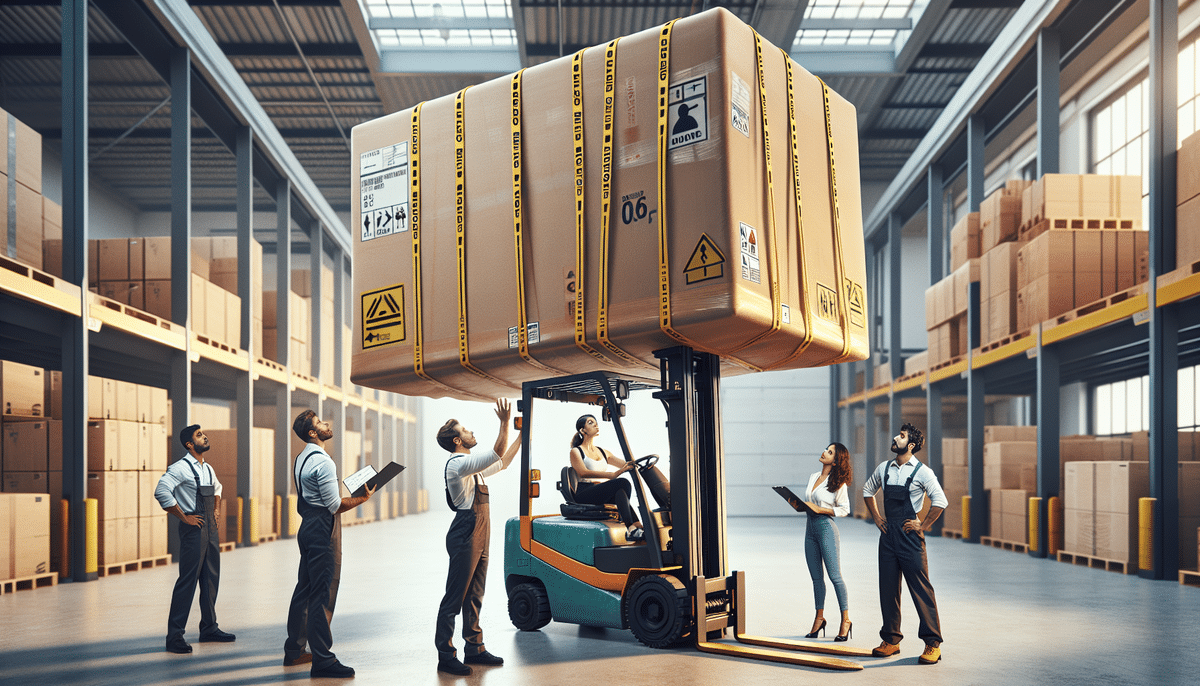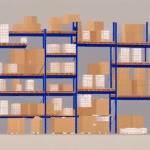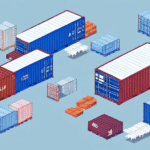How to Handle Packages Over 96 Inches: Essential Handling Tips
If you're in the business of sending or receiving packages, you understand the unique challenges associated with moving large or oversized items. This article delves into the intricacies of handling packages over 96 inches, offering additional tips to help you navigate this complex shipping landscape effectively.
Understanding the Challenges of Handling Large Packages
Large packages present several unique challenges for both shippers and receivers. One primary issue is the increased risk of damage during transit due to the size and weight of these items. Oversized packages require careful loading and unloading to prevent harm to the item, the carrier, or the individuals involved in the shipping process.
Additionally, shipping large packages often incurs higher costs. Shipping companies typically charge more for oversized items because they occupy additional space and resources. According to the 2023 Shipping Statistics Report, shipping costs for oversized items can be up to 50% higher than standard packages.
Logistical challenges also arise when delivering oversized items to residential areas, particularly in locations with limited space, such as apartment complexes. These challenges can lead to delayed or unsuccessful deliveries, frustrating both shippers and receivers.
Tips for Preparing Large Packages for Shipment
Proper preparation is crucial to ensure the safe shipment of large items. Here are some steps to enhance your preparation process:
- Use Protective Packaging: Ensure the item is securely packaged with materials such as bubble wrap, foam padding, and sturdy corrugated boxes to protect against damage.
- Detailed Labeling: Clearly label the package with handling instructions, especially if the item contains fragile components.
- Secure the Package: Utilize additional securing methods like strapping or banding to prevent the item from shifting during transit.
Accurate measurement and weighing of the package are essential to determine the appropriate shipping method and cost. Misrepresentation can lead to unexpected fees or delays. Additionally, insuring the package for its full value is recommended to protect against loss, damage, or theft during transit. Most shipping carriers offer insurance options, so be sure to inquire about coverage when selecting a shipping method.
Choosing the Right Shipping Service for Large Packages
Selecting the appropriate shipping service is vital for handling oversized packages. Consider the following when choosing a carrier:
- Specialized Freight Services: Opt for carriers that specialize in oversized items, such as freight services or carriers offering specific oversized item handling.
- Weight and Size Restrictions: Verify the weight and size limitations of your chosen carrier to ensure your package complies with their requirements.
- Delivery Timeline: Balance the cost and speed of delivery based on your specific needs. Some carriers offer expedited services at higher costs, while others provide more economical but longer delivery options.
Researching carrier reputations for handling large packages and their customer service quality is also crucial. Reliable carriers ensure that your package arrives safely and on time.
The Importance of Proper Packaging for Large Items
Proper packaging is fundamental when shipping large items. In addition to using sturdy boxes and ample padding, ensure the package is accurately labeled with handling instructions and a clear description of its contents to avoid confusion during transit.
Consider the mode of transportation when packaging. For air shipments, adhere to airline-specific guidelines and regulations. For truck transportation, ensure that the packaging can withstand the rigors of road travel.
Environmental considerations are also important. Using eco-friendly packaging materials, such as biodegradable or recyclable options, not only reduces your carbon footprint but also promotes sustainability and enhances your brand image.
How to Safely Load and Unload Oversized Packages
Loading and unloading oversized packages requires specialized equipment and careful planning:
- Use Appropriate Equipment: Utilize cranes, forklifts, or hoists designed to handle heavy items. Avoid manual handling to prevent injury and damage.
- Secure the Environment: Ensure the loading and unloading area is free of obstacles and debris. Adequate lighting and visibility are essential for safe operations.
- Clear Communication: Maintain clear communication among all parties involved, including shippers, receivers, and logistics providers, to ensure everyone understands the procedures and safety measures.
Navigating Shipping Regulations for Oversized Items
Shipping oversized items involves navigating a complex web of regulations. Key considerations include:
- Compliance with Regulations: Research and comply with regulations related to hazardous materials, import/export laws, and customs requirements to avoid fines or shipment rejections.
- Mode of Transportation: Depending on the size and weight, you may need specialized carriers like flatbed trucks or oversized cargo planes, each with its own set of regulations.
- Insurance Coverage: Ensure adequate insurance coverage to protect against potential damage or loss. Understand the coverage limits and exclusions offered by carriers.
Failure to adhere to these regulations can result in significant delays and additional costs. For detailed regulatory information, refer to authoritative sources such as the U.S. Department of Transportation.
Avoiding Common Mistakes When Handling Large Packages
To streamline the shipping process and ensure the safe arrival of oversized packages, avoid these common mistakes:
- Overloading the Package: Ensure that the package is not too heavy for the chosen shipping method and complies with carrier weight limits.
- Insufficient Packaging Materials: Use high-quality, durable packaging materials to protect the contents from damage.
- Lack of Handling Instructions: Provide clear and detailed handling instructions to guide those handling the package.
Properly securing and labeling the package with accurate information is also essential to prevent loss or delays. Partnering with a reliable shipping carrier experienced in handling oversized packages can further ensure a smooth shipping experience.
Tips for Keeping Your Oversized Package Intact During Transit
Maintaining the integrity of your oversized package during transit involves several strategies:
- High-Quality Packaging: Invest in robust packaging materials that can withstand the stresses of shipping.
- Clear Handling Instructions: Label the package with instructions such as "Fragile," "Handle with Care," or "This Side Up" to guide handlers.
- Additional Safety Features: Utilize strapping, shrink-wrapping, or palletization to prevent shifting and damage.
Choosing a carrier that specializes in oversized item shipping can also enhance the safety and security of your package during transit.
How to Handle Unexpected Issues with Large Package Delivery
Despite meticulous planning, unforeseen issues can occur during the delivery of oversized items. Be prepared to address challenges such as:
- Damage in Transit: Inspect the package upon receipt and document any damage. Contact the carrier and insurance provider immediately to file a claim.
- Missed Delivery Windows: Stay in communication with the carrier to reschedule deliveries promptly.
- Incorrect Documentation: Ensure all shipping documents are accurate and complete. In case of errors, work with the carrier to rectify them quickly.
Maintaining detailed records of shipment information and fostering open communication with all parties involved can help mitigate and resolve unexpected issues efficiently.
Best Practices for Communicating with Shippers and Receivers about Oversized Packages
Effective communication is paramount when dealing with oversized packages. Implement the following best practices:
- Clear Handling Instructions: Provide detailed instructions to ensure proper handling of the package.
- Special Requirements: Inform all parties of any special requirements or restrictions related to the package.
- Delivery Instructions: If you are the receiver, communicate any specific delivery instructions, such as preferred delivery times or access limitations, to the carrier.
Ensuring that everyone involved understands their roles and responsibilities can prevent complications and ensure a smooth shipping process.
Managing the Cost of Shipping Oversized Items
Shipping oversized items can be expensive, but cost management strategies can help reduce expenses:
- Consolidate Shipments: Combine multiple shipments into a single pallet or container to save on shipping fees.
- Compare Carrier Rates: Shop around for carriers offering competitive rates for oversized packages. Utilize platforms that compare shipping rates across multiple carriers.
- Freight Brokers: Consider using a freight broker to find the best shipping options and negotiate better rates based on volume and frequency.
Implementing these strategies can help manage and potentially lower the costs associated with shipping oversized items.
Insights from Industry Experts on Handling Large Packages
Industry experts highlight the importance of meticulous preparation, robust packaging, and effective communication when handling large packages. According to logistics consultant Jane Doe, "Proper documentation and partnering with experienced carriers are critical to ensuring the safe and timely delivery of oversized items."
Another expert, supply chain specialist John Smith, emphasizes the need to stay informed about the latest shipping regulations and technological advancements to optimize the shipping process.
The Future of Shipping Large Items: Trends and Innovations
The future of shipping large items is being shaped by technological advancements and innovative solutions:
- Autonomous Vehicles: Self-driving trucks and drones are expected to enhance delivery efficiency and reduce transportation costs.
- Advanced Robotics: Robotics technology is improving the handling and sorting of oversized packages within warehouses and distribution centers.
- Data Analytics: Leveraging big data and analytics can optimize shipping routes, predict delivery times, and improve overall logistics management.
These trends are poised to streamline the shipping process, reduce costs, and improve delivery times, making the future of oversized item shipping more efficient and reliable.
Conclusion: Mastering the Art of Handling Packages Over 96 Inches
Successfully shipping oversized items requires comprehensive planning, meticulous preparation, and attention to detail. By adhering to the guidelines outlined in this article and partnering with experienced shipping providers, you can minimize risks associated with damage, delays, and unexpected costs. Embracing best practices and staying informed about industry trends will enable you to master the art of handling packages over 96 inches, ensuring they arrive safely and on time.






















